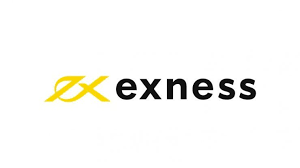
Understanding Trading Costs: Exness Fees Calculator
When engaging in forex trading, understanding the costs involved is crucial to maximizing your profits. The Exness Fees Calculator https://tradingarea-ng.com/exness-calculator/ serves as an essential tool for traders looking to estimate their trading fees accurately.
What are Trading Fees?
Trading fees encompass various costs that traders incur when executing trades in the financial markets. These fees can include spreads, commissions, overnight financing fees, and other charges. Each broker has a different fee structure, and these can significantly impact the potential profitability of your trades.
The Importance of Knowing Your Fees
Understanding the fees associated with your trading activities is essential for several reasons:
- Profit Calculation: Knowing your costs helps you calculate true profits or losses.
- Risk Management: Accurate fee evaluation is crucial when implementing risk management strategies.
- Choosing a Broker: Not all brokers have the same fee structures. Comparing costs can help you find a more suitable broker.
Types of Fees in Forex Trading
Forex trading involves various types of fees, which include:
1. Spread
The spread is the difference between the bid price and the ask price of a currency pair. This is typically how brokers make money, and the spread can vary based on market conditions and the broker’s policy.
2. Commission
Some brokers charge a commission on trades, in addition to the spread. This fee is typically a fixed amount or a percentage of the trade size.

3. Swap Fees
Swap fees, or overnight financing costs, apply when a position is held overnight. These fees can be positive or negative, depending on the interest rates of the currencies involved.
4. Inactivity Fees
Many brokers impose inactivity fees if no trades are executed over a specified period. This fee aims to encourage active trading and minimize operational costs for the broker.
Using the Exness Fees Calculator
The Exness Fees Calculator is designed to provide traders with a simple way to estimate the total fees associated with their trades. To use the calculator, follow these steps:
- Select the currency pair you wish to trade.
- Enter the trade size (lot size) you plan to trade.
- Input any specific parameters required by the calculator, such as leverage and the type of account.
- Click “Calculate” to view the estimated fees for your trade.
Advantages of Using the Exness Fees Calculator
Utilizing the Exness Fees Calculator provides several advantages:
- Efficiency: Quickly assess expected trading costs and make informed decisions.
- Accuracy: Generates precise fee estimates based on real-time data.
- Comparison: Evaluate costs across different strategies or currency pairs.
- Planning: Helps in budgeting and planning for trading activities.
Best Practices for Managing Trading Fees
To effectively manage your trading fees, consider the following best practices:
- Choose the Right Broker: Compare the fee structures of different brokers to find the most cost-effective options for your trading style.
- Trade with a Plan: Implement a trading plan that considers fees to ensure you’re trading profitably.
- Stay Informed: Keep updated on market conditions that could affect spreads and fees, especially during high volatility.
- Utilize Tools: Make use of tools like the Exness Fees Calculator to keep track of your trading expenses.
In Conclusion
Understanding and managing trading fees is essential for any forex trader. The Exness Fees Calculator is an invaluable resource that can help you estimate these costs accurately and incorporate them into your trading strategy. By utilizing such tools and following best practices, traders can position themselves for improved profitability and more strategic trading decisions.
